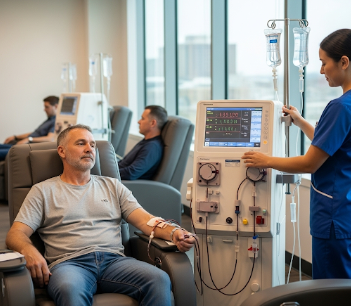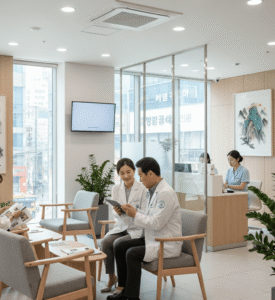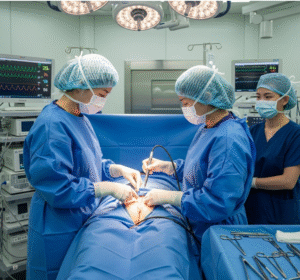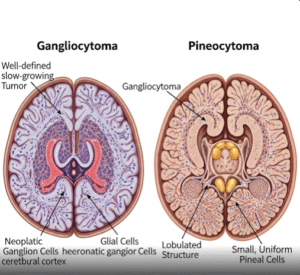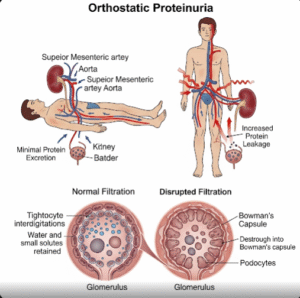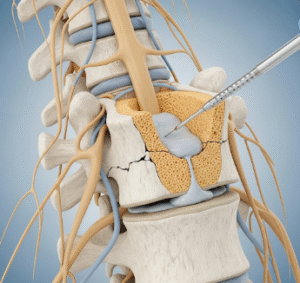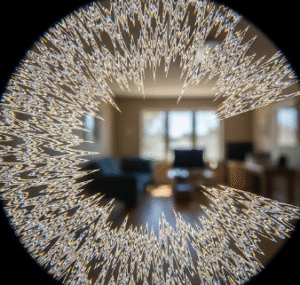What is Dialysis?
Dialysis is a medical treatment that performs the function of the kidneys when they are no longer able to filter blood effectively. It removes waste products, excess fluids, and toxins from the bloodstream, helping maintain proper chemical balance and preventing dangerous complications.
There are two main types of dialysis:
✔️ Hemodialysis – Blood is filtered through a machine (dialyzer) outside the body
🔹 Peritoneal Dialysis – Uses the lining of the abdomen (peritoneum) to filter blood inside the body
Dialysis is crucial for patients with chronic kidney disease (CKD), acute kidney failure, or end-stage renal disease (ESRD). It is life-saving and essential for maintaining overall health when the kidneys cannot function adequately.
In Korea, dialysis is widely available in hospitals, specialized dialysis centers, and advanced kidney clinics. Korean medical facilities offer state-of-the-art hemodialysis machines, automated peritoneal dialysis systems, and expert nephrologists, making it a preferred destination for both locals and international patients.
➡️ Removes toxins and excess fluids from the blood
➡️ Helps maintain electrolyte and acid-base balance
➡️ Supports life in patients with kidney failure
Why It’s Done
Dialysis is performed to replace the function of failing kidneys and prevent life-threatening complications:
✔️ End-Stage Renal Disease (ESRD) – When kidneys function below 10–15% capacity
✔️ Severe electrolyte imbalances – High potassium, sodium, or phosphate levels
✔️ Fluid overload – Causes swelling, high blood pressure, or heart problems
✔️ Uremia – Accumulation of waste products leading to fatigue, nausea, or confusion
✔️ Preparation for kidney transplant – Dialysis may be required before and sometimes after surgery
Benefits of timely dialysis:
➡️ Prolongs life → Essential for patients with kidney failure
➡️ Prevents organ damage → Protects heart, brain, and other organs
➡️ Improves quality of life → Reduces symptoms such as fatigue, nausea, and swelling
➡️ Stabilizes chemical balance → Maintains blood pressure and electrolyte levels
In Korea, dialysis is often covered by national health insurance for patients with CKD, making it both accessible and cost-effective.
Alternatives
While dialysis is essential for kidney failure, alternatives may include:
⭐ Kidney Transplant – The most effective long-term solution, replacing kidney function permanently
⭐ Conservative Management – For patients not eligible for dialysis or transplant, focuses on symptom control and diet
⭐ Home Hemodialysis – Advanced patients can perform dialysis at home under guidance
⭐ Automated Peritoneal Dialysis (APD) – A machine performs peritoneal dialysis overnight, providing more flexibility
👉 While transplants are ideal, dialysis remains the mainstay treatment for most patients awaiting transplant or not eligible for surgery.
Preparation
Proper preparation ensures safe and effective dialysis in Korea:
🔹 Medical Evaluation – Blood tests, urine analysis, and imaging to assess kidney function
🔹 Vascular Access Creation – For hemodialysis, an arteriovenous (AV) fistula, graft, or central venous catheter is created
🔹 Peritoneal Catheter Placement – For peritoneal dialysis, a catheter is surgically inserted into the abdomen
🔹 Medication Review – Adjustments for blood pressure, anticoagulants, or diabetic medications
🔹 Patient Education – Dietary restrictions, fluid management, and infection prevention
⭐ Patients are advised to bring a list of medications and medical history to the dialysis center
⭐ Routine hygiene and skin care are important to prevent infection at access sites
How It’s Done
The dialysis procedure differs depending on the type:
1. Hemodialysis
✔️ Blood is drawn from a vein through a needle or catheter
✔️ Blood passes through a dialyzer (artificial kidney), which filters waste
✔️ Cleaned blood is returned to the body
✔️ Each session lasts 3–5 hours, 3 times per week
2. Peritoneal Dialysis
🔹 Dialysate fluid is infused into the abdominal cavity
🔹 The peritoneum acts as a natural filter
🔹 Fluid is drained after several hours, removing waste and excess fluid
🔹 Can be performed manually (Continuous Ambulatory Peritoneal Dialysis) or using a machine at night (Automated Peritoneal Dialysis)
Highlights:
➡️ Vital for survival in kidney failure
➡️ Customizable schedule based on patient lifestyle
➡️ Regular monitoring required for electrolytes and overall health
Recovery
Dialysis is life-sustaining but not curative, so recovery focuses on post-session wellbeing:
✔️ Mild Fatigue – Common after hemodialysis, usually resolves in hours
✔️ Fluid Adjustment – Patients may feel thirsty or slightly low in blood pressure
✔️ Dietary & Fluid Restrictions – Important for preventing complications
✔️ Ongoing Monitoring – Blood tests before each session to assess electrolytes and hemoglobin
⭐ Patients typically continue dialysis for life or until a transplant is available
⭐ Home dialysis allows more independence but requires training and careful monitoring
Complications
Although dialysis is life-saving, it carries potential risks:
⚠️ Low Blood Pressure (Hypotension) – During or after hemodialysis
⚠️ Muscle Cramps – Common due to fluid shifts
⚠️ Infection – At catheter or fistula site
⚠️ Access Problems – Clotting, narrowing, or failure of AV fistula
⚠️ Bone & Mineral Disorders – Chronic kidney disease affects calcium and phosphate levels
➡️ In Korea, experienced nephrologists and advanced dialysis machines significantly reduce these complications. Patients also receive comprehensive monitoring, diet counseling, and infection prevention support.
Treatment Options in Korea
Korea offers world-class dialysis care with modern facilities and trained specialists:
🏥 Advanced Hemodialysis Centers – Equipped with the latest machines, water purification systems, and monitoring tools
🏥 Peritoneal Dialysis Programs – Home or hospital-based with patient education and support
🏥 Integrated Nephrology Clinics – Coordinated care for CKD, diabetes, hypertension, and cardiovascular risk
🏥 Kidney Transplant Programs – For eligible patients seeking long-term treatment
🏥 Medical Tourism Packages – Translation services, transportation, and hotel arrangements for international patients
Approximate Costs in Korea:
🔹 Hemodialysis (per session) → $70 – $120
🔹 Peritoneal Dialysis (monthly supplies) → $500 – $900
🔹 Kidney Transplant Surgery → $25,000 – $40,000 depending on hospital and donor type
🔹 Follow-up & Laboratory Tests → $50 – $150 per visit
Conclusion
Dialysis is a life-saving treatment for kidney failure, restoring essential kidney functions and preventing life-threatening complications.
In Korea, patients benefit from:
✔️ State-of-the-art dialysis machines and monitoring systems
✔️ Expert nephrologists and comprehensive kidney care
✔️ Affordable, accessible treatment options
✔️ Full support for international patients through medical tourism services
👉 Whether for hemodialysis, peritoneal dialysis, or kidney transplant preparation, Korea provides world-class care with safety, comfort, and personalized treatment plans.
Early intervention, regular dialysis, and lifestyle management ensure the best possible outcomes for patients living with kidney disease.

